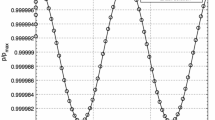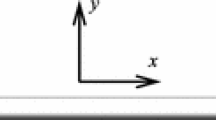Abstract
In transportation engineering, there is the need of having quick and reliable tools for estimating the acoustic power radiated by a given elastic surfaces. Normally, the computational and experimental tools, or their combination, are based on CPU time-consuming matrix methods. This collaborative activity started some years ago as a way to share this central question, i.e. is it possible to build on digital methods that can easily and quickly reproduce (vibro)acoustic fields without using conventional CPU time-consuming matrix methods? In all the present numerical methods, the matrix central to the full computational process is not universal, i.e., repetitive computations are required for each new set of design iterations. The aim of this paper is the definition of a universal acoustic impedance matrix that accommodates any form of surface radiator, regardless of its geometry or boundary condition using a digitized, acoustic-space concept. Plane wave superposition is used on a map on which the points and the wave numbers are simply related by integers. This new concept for re-imagining acoustic space is expected to have several features: 1) the space is mapped in terms of a grid-work of evenly-spaced integer points, 2) each grid is insonified with a collection of plane waves chosen to generate the Greens functions comprising the impedance matrix and 3) the acoustic impedance matrix (derived via the plane waves superposition and the digitized method) leads to orthogonality and consequently no inversion operation is required. Some of these steps are now ready and shown in the present work. The final goal is still to be achieved but the paper presents the first successful test cases and the definition of the main points of the expected procedure.
Similar content being viewed by others
References
G. Koopmann, J. Fahnline, Designing Quiet Structures: A Sound Power Minimization Approach, ISBN: 9780124192454, 1997, Academic Press.
F. Jacobsen, P. Juhl, Radiation of Sound, 2011
Y. S. Hwang, A Wave Superposition Method Formulated in Digital Acoustic Space, Ph.D. Thesis, 2008, The Pennsylvania State University, USA.
M. J. Kamrath, A Plane Wave Superposition Method: Modeling Acoustic Fields Inside Cavities, M.S. Thesis, 2009, The Pennsylvania State University, USA.
B. C. Zellers, An Acoustic Superposition Method for Computing Structural Radiation in Spatially Digitized Domains, Ph. D. Thesis, 2006, The Pennsylvania State University, USA.
R. Wang. Introduction to Orthogonal Transforms. Cambridge University Press, 2012, ISBN: 9780521516884.
R. Szeliski. Computer Vision: Algorithms and Applications, http://szeliski.org/Book/
Author information
Authors and Affiliations
Rights and permissions
About this article
Cite this article
De Rosa, S., Koopmann, G. & Marulo, F. First Steps Towards a Digital Plane Wave Superposition Method for Vibroacoustic Problems. Aerotec. Missili Spaz. 97, 13–18 (2018). https://doi.org/10.1007/BF03404760
Published:
Issue Date:
DOI: https://doi.org/10.1007/BF03404760




